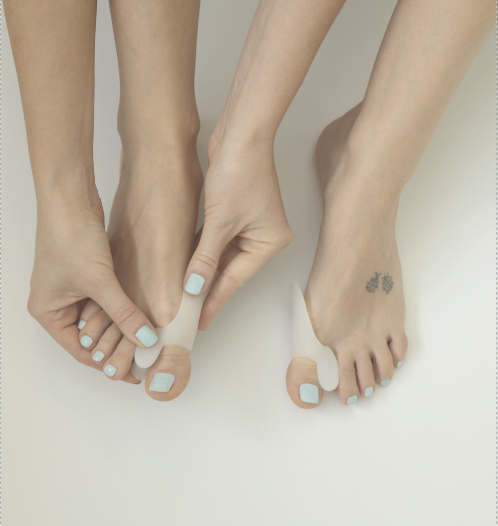What can I do to protect myself from bunions?
Bunions are a very common feature and become more prevalent as we age. On the rarer occasion we also see clients present with something called a hallux varus which mechanically could be defined as a more stable foot type nevertheless it however presents with other issues. The genetic component to a bunion is strong and tends to run in families. Women tend to be more commonly affected yet this is not always the case.
Is there anything I can do as prehabilitation measures? That said how can we help and encourage the toe in the right direction if we observe this prevalence and wish to protect our toe as best as possible?
To judge how severe a bunion is clinicians take an x-ray as measuring the angles between certain bones in the foot, in particular, the hallux valgus angle (HVA) which is the angle between the first metatarsal and the big toe plus the angle formed by the first and second metatarsals, called the intermetatarsal angle (IMA). Our upper limit of a normal HVA is 15 degrees. The upper limit for the intermetatarsal is 9 degrees.
Things to avoid in order to prevent having a bunion:
- Constrictive foot wear
- Daily high heels with tapered toe boxes
- Slip ons
- Long days / hours of standing
- Ignoring our feet completely
In any case you already have a bunion, how do we prevent the bunion from getting worse? Here are some tips that will help with your bunion:
- Don’t wear wrong footwear. Tight shoes as well as heels can rub against your bunion, making the pain and inflammation worse. Picking comfortable, roomy shoes is a great way to ensure your bunion doesn’t get worse. If you already wear loose shoes, you can add additional shoe support or cushioning inside your shoes to help reduce the progression of the bunion. Look out for bunion-specific products in the store, or speak to our team to find the best products for you. Our podiatrist may also recommend custom orthotics that can help with your bunion.
- Avoid wearing high heels every single day. Nothing puts pressure on your toes, and particularly your big toe joint, like high heels. If you can give up heels in favor of supportive flats, do it. If you’re not quite ready to give heels up yet, consider trading them out for those flats a few days a week. Also, if you’re going to wear heels try to keep the height under two inches to minimize pressure. Or look at adding wedges or block heels to your wardrobe since they are best at distributing weight.
- Do stretches and exercises to strengthen your feet. Just like other parts of your body, you can train your feet to become stronger and more flexible using some specific exercises. This can help improve your overall foot health, reduce foot and ankle pain, relieve muscle soreness and keep you moving.
- Rest your feet. Our feet get a lot of use, so they deserve an equal amount of rest and relaxation. Getting off your feet, especially when you’ve been standing or moving around for a while, can help release some tension and pressure. If you can, take your shoes off for a few minutes throughout the day to give your feet room to breathe. Even if you’re wearing the perfect bunion-preventing shoes, your feet will still be thankful.
- Monitor your feet for changes. Bunions develop slowly, so paying attention to any changes in your feet may help you catch subtle signs earlier. Some of the earliest signs of a bunion are pain, swelling and redness in your big toe joint. If you’re beginning to notice a lump or a bump on the side of your big toe, or it’s beginning to turn in toward the other toes, things are likely more advanced. In either case, don’t hesitate to make an appointment with a podiatrist. Podiatrists specialize in diagnosing and treating foot and ankle conditions, and they can help you take the right next steps to relieve bunion pain.
We recommend measuring your forefeet from the big toe to the little toe and checking this approximately every 6 months.
If all else fails, surgical intervention is indicated.
Are you suffering from any foot problems? At The Chelsea Clinic, we can help. One of our podiatrist can assist and then recommend what treatments are best to get you back on track.  Podiatrist South Kensington
Podiatrist South Kensington
Schedule an appointment here or you may call us at +44 (0) 207 101 4000. 
We hope you have a feetastic day! 

-The Chelsea Clinic and Team


 Podiatrist South Kensington
Podiatrist South Kensington




